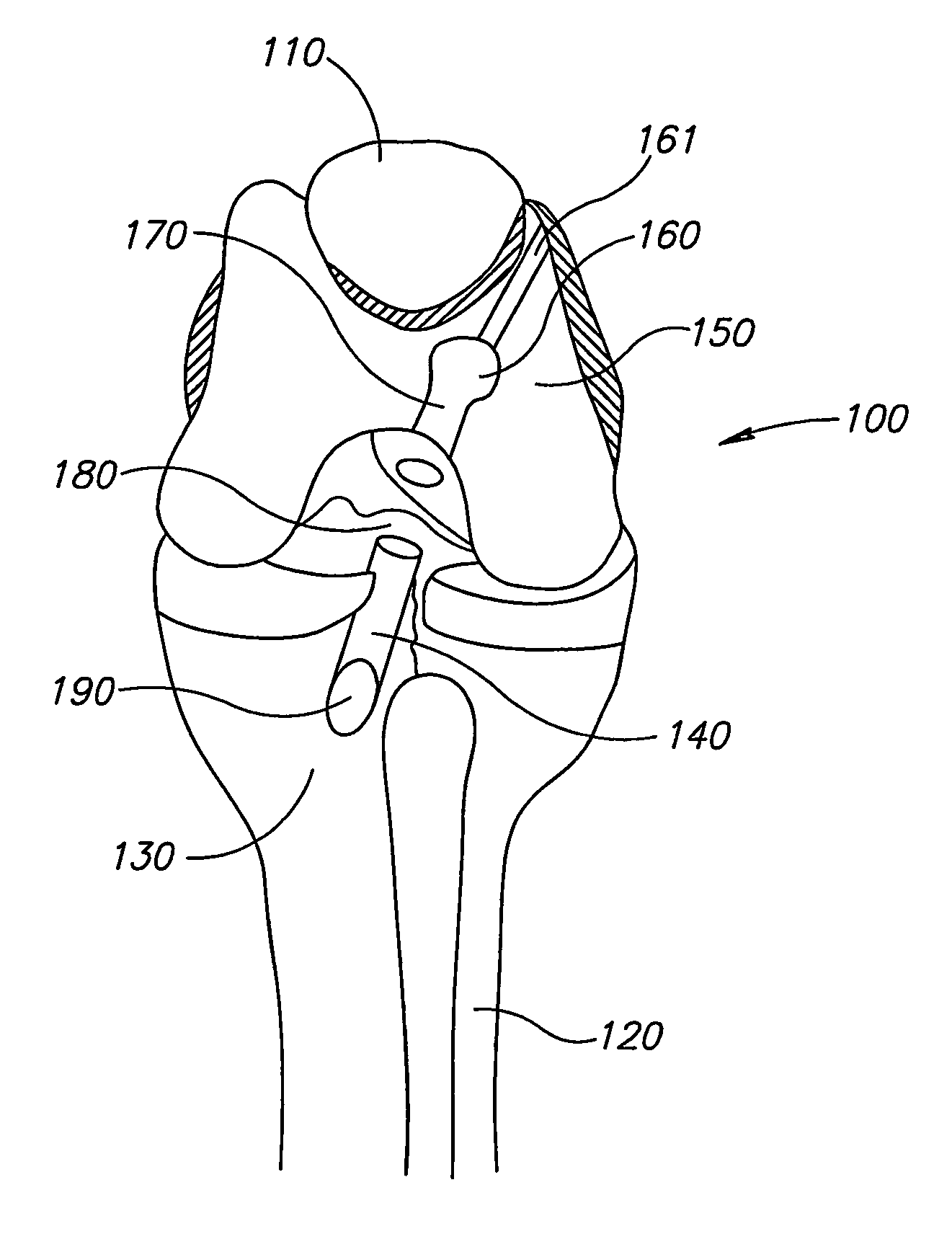Soft Tissue to Bone Fixation
a technology of soft tissue and bone, applied in the field of soft tissue to bone fixation, can solve the problems of additional trauma to the bone, impede the use of visualization devices, damage to the graft and/or misposition,
- Summary
- Abstract
- Description
- Claims
- Application Information
AI Technical Summary
Benefits of technology
Problems solved by technology
Method used
Image
Examples
Embodiment Construction
General Description
[0093]FIG. 1 is a schematic illustration of a left knee joint 100 in flexion prepared for replacement of a damaged ligament according to an exemplary embodiment of the invention. FIG. 1 shows the proximal ends of a tibia 130 and a fibula 120, meeting a femur distal end 150. A patella 110 is shown positioned above the femur distal end 150.
[0094] In an exemplary embodiment of the invention, a tunnel 190 is prepared comprising a through hole 140 through the proximal tibia, continuing through a joint void 180 between the bones, to a hole 170 in the distal femur 150. In an exemplary embodiment of the invention, the diameter of a distal end of hole 170 in the distal femur end 150 is enlarged to form an expansion region 160 for anchoring a ligament replacement as described below. Optionally, tunnel 190 is planned to be located approximately between the end attachment points of the original ACL. In an exemplary embodiment of the invention, a replacement ligament is ins...
PUM
 Login to View More
Login to View More Abstract
Description
Claims
Application Information
 Login to View More
Login to View More - R&D
- Intellectual Property
- Life Sciences
- Materials
- Tech Scout
- Unparalleled Data Quality
- Higher Quality Content
- 60% Fewer Hallucinations
Browse by: Latest US Patents, China's latest patents, Technical Efficacy Thesaurus, Application Domain, Technology Topic, Popular Technical Reports.
© 2025 PatSnap. All rights reserved.Legal|Privacy policy|Modern Slavery Act Transparency Statement|Sitemap|About US| Contact US: help@patsnap.com



